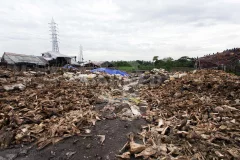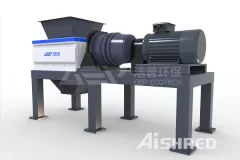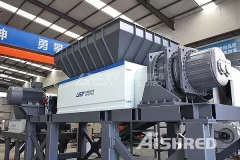
How are Slaughterhouse Waste Treated?
2024-04-02The treatment of slaughterhouse waste is a complex process that must meet strict health and environmental requirements. Slaughterhouse waste includes a range of by-products such as blood, bones, viscera, fats, skins, and other tissues that are not intended for human consumption. Here are the key steps and techniques used for treating this waste, including references to specific products that could be used in these processes:Collection and separation: Waste is collected separately in the slaughterhouse to avoid cross-contamination. Liquid and solid elements are separated.Shredding and reduction: Solid waste is ground to reduce its size and facilitate further processing.The GDF double shaft shredder could be used to reduce the particle size of solid waste to a manageable format.Thermal treatment: Waste is often subjected to thermal treatment, such as sterilization or cooking, to destroy pathogens and reduce waste volume.Anaerobic digestion or composting: Organic waste can be treated by anaerobic digestion to


Animal carcasses or other body tissues usually come from pastures, farms and slaughterhouses, and they are generally considered harmless waste (except for viral infections or special regulations). The disposal of these wastes is quite challenging. Unlike plant organic wastes, animal carcasses have a great impact on the environment. Careless handling may cause environmental pollution and virus spread. Options for routine disposal of animal carcasses include landfill, composting, incineration and rendering. Before processing, we would recommend an additional preprocessing step to shred the animal carcass into small pieces, as it will increases the efficiency and reduces energy consumption. AIShred's optimized dual-shaft shredders are ideal for this task. It is durable and corrosion-resistant, and can easily handle bones, foreign objects such as iron nails will not affect its stable operation at all. How to select and purchase a appropriate animal carcass shredder equipment? Professional animal crushing



